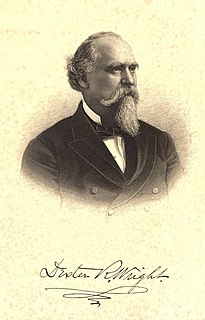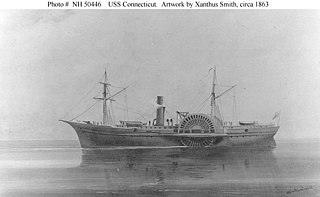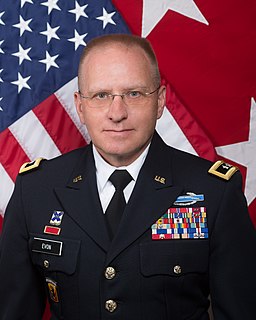 W
W1st Connecticut Heavy Artillery Regiment was an artillery regiment that served in the Union Army during the American Civil War.
 W
WThe 13th Connecticut Infantry Regiment was an infantry regiment that served in the Union Army during the American Civil War.
 W
WThe 15th Connecticut Infantry Regiment was an infantry regiment that served in the Union Army during the American Civil War.
 W
WThe 26th Infantry Division was an infantry division of the United States Army. A major formation of the Massachusetts Army National Guard, it was based in Boston, Massachusetts for most of its history. Today, the division's heritage is carried on by the 26th Maneuver Enhancement Brigade.
 W
WThe 43rd Infantry Division was a formation of the United States Army from 1920 to 1963, serving in the Pacific during World War II. It was activated in 1920 as a National Guard Division in Connecticut, Maine, Rhode Island, and Vermont. The 143rd Regional Support Group of the Connecticut National Guard now carries on the heritage.
 W
WThe 76th Infantry Division was a unit of the United States Army in World War I, World War II and the Cold War. The division was inactivated in 1996 and has been reconstituted as the 76th US Army Reserve Operational Response Command in 2013.
 W
WThe 102nd Infantry Regiment currently consists of one battalion in the Connecticut National Guard. Regimental designation is used only in historical tradition. It is one of several National Guard units with colonial roots. There is no regimental commander, staff or headquarters. The 1st Battalion, 102nd Regiment is headquartered in New Haven, Connecticut. Its mascot is Sergeant Stubby.
 W
W103rd Air Control Squadron is a National Guard squadron assigned to the Connecticut Air National Guard. It provides theater command with air battle management, radar surveillance, air space control, and long haul communication capabilities to plan and execute combined air operations, air superiority and air strike ground attack operations, and provides state authorities with a dedicated force ready to react to local and national emergencies. The unit is located on Orange Air National Guard Station in Orange, CT.
 W
WThe 118th Airlift Squadron is a unit of the Connecticut Air National Guard 103d Airlift Wing stationed at Bradley Air National Guard Base, Windsor Locks, Connecticut. The 118th is equipped with the C-21A Learjet and C-130H.
 W
WThe 385th Infantry Regiment was part of the 76th Infantry Division of the US Army during World War II and fought in Germany, including the Siegfried Line. The 385th's 2nd Battalion crossed the Nims River at Niederweis taking the town while the 1st Battalion attacked south between Nims and the Prum toward Irrel. 3rd Battalion was the first of the regiment to span the Sauer and go into action in Germany. The first days of combat were a series of pillboxes and prepared defenses until the Line had been breached and the Regiment began moving at an ever accelerated speed.
 W
WThe Wildey is a gas-operated, double-action/single-action pistol designed by Wildey J. Moore. It was designed to fire several high-pressure proprietary cartridges including the .45 Winchester Magnum and the .475 Wildey Magnum. They are currently being produced by USA Firearms Corp.-Wildey Guns of Winsted, Connecticut.
 W
WThe military career of Benedict Arnold in 1781 consisted of service in the British Army. Arnold had changed sides in September 1780, after his plot was exposed to surrender the key Continental Army outpost at West Point. He spent the rest of 1780 recruiting Loyalists for a new regiment called the American Legion. Arnold was then sent to Virginia with 1,600 men in late December by General Sir Henry Clinton, with instructions to raid Richmond and then establish a strong fortification at Portsmouth.
 W
WUSS Bridgeport (AD-10/ID-3009) was a destroyer tender in the United States Navy during World War I and the years after. She was a twin-screw, steel-hulled passenger and cargo steamship built in 1901 at Vegesack, Germany as SS Breslau of the North German Lloyd line. Breslau was one of the seven ships of the Köln class of ships built for the Bremen to Baltimore and Galveston route.
 W
WColt's Manufacturing Company, LLC is an American firearms manufacturer, founded in 1855 by Samuel Colt. It is the successor corporation to Colt's earlier firearms-making efforts, which started in 1836. Colt is known for the engineering, production, and marketing of firearms, most especially between the 1850s and World War I, when it was a dominating force in its industry and a seminal influence on manufacturing technology. Colt's earliest designs played a major role in the popularization of the revolver and the shift away from earlier single-shot pistols. Although Samuel Colt did not invent the revolver concept, his designs resulted in the first very successful ones.
 W
WUSS Connecticut (1861) was a large steamer acquired by the Union Navy during the American Civil War. Her primary task was to prevent ships from penetrating the Union blockade of Southern ports.
 W
WUSS Connecticut (BB-18), the fourth United States Navy ship to be named after the state of Connecticut, was the lead ship of her class of six battleships. Her keel was laid on 10 March 1903; launched on 29 September 1904, Connecticut was commissioned on 29 September 1906, as the most advanced ship in the US Navy.
 W
WUSS Connecticut (SSN-22) is a Seawolf-class nuclear powered fast attack submarine operated by the United States Navy. Connecticut is the fifth active United States Ship to be named for the U.S. state of Connecticut, going back to 1776. The contract to build her was awarded to the Electric Boat Division of General Dynamics Corporation in Groton, Connecticut on 3 May 1991 and her keel was laid down on 14 September 1992. She was launched on 1 September 1997 sponsored by Patricia L. Rowland, wife of the Governor of Connecticut, John G. Rowland, and commissioned on 11 December 1998.
 W
WThe Adjutant General of the State of Connecticut is the highest-ranking military officer in the Armed Forces of the State of Connecticut which includes the Connecticut National Guard, the four units of the Governor's Guards, the Connecticut State Guard, the Connecticut State Guard Reserve and the Connecticut Naval Militia. The current Adjutant General is Brigadier General Francis J. Evon, Jr.. He was appointed to a four-year term effective July 1, 2018.
 W
WThe Connecticut Air National Guard is the aerial militia of the State of Connecticut, United States of America. It is, along with the Connecticut Army National Guard, an element of the Connecticut National Guard.
 W
WThe New England state of Connecticut played an important role in the American Civil War, providing arms, equipment, technology, money, supplies, and manpower for the Union Army, as well as the Union Navy. Several Connecticut politicians played significant roles in the Federal government and helped shape its policies during the war and the subsequent Reconstruction.
 W
WThe Connecticut Military Department is a state agency of the government of Connecticut. Its primary components are the Connecticut Army National Guard, the Connecticut Air National Guard, and four companies of the state militia. The Military Department of the State of Connecticut traces its origins to May 11, 1637, when the "General Courts" established a military arm of the provincial government. In 1939, the State's Military Department was established to consolidate the offices of Adjutant General, Quartermaster General, Armory Board, and Armory Board Inspector.
 W
WThe Flood of 1955 was one of the worst floods in Connecticut's history. Two back-to-back hurricanes saturated the land and several river valleys in the state, causing severe flooding in August 1955. The rivers most affected were the Mad River and Still River in Winsted, the Naugatuck River, the Farmington River, and the Quinebaug River. The towns that suffered much loss include Farmington, Putnam, Naugatuck, Waterbury, and Winsted. 87 people died during the flooding, and property damage across the state was estimated at more than $200 million, in 1955 figures. The floods prompted changes in safety measures, river monitoring, and zoning laws.
 W
WThe Governor's Guards of Connecticut are four distinct units of the Connecticut State Guard, a part of the organized militia under the Connecticut State Militia. There are two foot guard units and two horse guard units.
 W
WThe Governor's Guards of Connecticut are four distinct units of the Connecticut State Guard, a part of the organized militia under the Connecticut State Militia. There are two foot guard units and two horse guard units.
 W
WThe Groton Monument, sometimes called the Fort Griswold Monument, is a granite monument in Groton, Connecticut. It is dedicated to the defenders who fell during the Battle of Groton Heights on September 6, 1781. The monument was originally 127 feet (39 m) high, but it was changed in 1881 to commemorate the centennial of the Battle of Groton Heights; the cupola was removed and replaced by an iron-capped pyramid in emulation of the Bunker Hill Monument. The Groton monument bears a plaque describing the events of the Battle of Groton Heights, and another plaque with the names of the Americans who died in the battle. Lightning destroyed the capstone in 1918 and damaged the adjacent Monument House Museum which features exhibits about the Revolutionary War. Visitors can climb the monument and visit the museum from Memorial Day through Labor Day. The Groton Monument is located in Fort Griswold Battlefield State Park, which includes Fort Griswold.
 W
WThe first USS Machias (PG-5), a schooner-rigged gunboat, was laid down in February 1891 by Bath Iron Works, Bath, Maine. She was launched on 8 December 1891. She was sponsored by Miss Ethel Hyde, daughter of President Hyde of Bath Iron Works and commissioned at Portsmouth Navy Yard, Kittery, Maine, 20 July 1893, Commander Charles J. Train in command.
 W
WThe Northeastern United States blizzard of 1978 was a catastrophic, historic nor'easter that struck New England, New Jersey, and the New York metropolitan area. The Blizzard of '78 formed on Sunday, February 5, 1978, and broke up on February 7. The storm was primarily known as "Storm Larry" in Connecticut, following the local convention promoted by the Travelers Weather Service on television and radio stations there. Snow fell mostly from Monday morning, February 6, to the evening of Tuesday, February 7. Connecticut, Rhode Island, and Massachusetts were hit especially hard by this storm.
 W
WThe Pequot War was an armed conflict that took place between 1636 and 1638 in New England between the Pequot tribe and an alliance of the colonists of the Massachusetts Bay, Plymouth, and Saybrook colonies and their allies from the Narragansett and Mohegan tribes. The war concluded with the decisive defeat of the Pequots. At the end, about 700 Pequots had been killed or taken into captivity. Hundreds of prisoners were sold into slavery to the West Indies; other survivors were dispersed as captives to the victorious tribes.
 W
WPutnam Memorial State Park is a history-oriented public recreation area in the town of Redding, Connecticut. The state park preserves the site that Major General Israel Putnam chose as the winter encampment for his men in the winter of 1778/1779 during the American Revolutionary War. It is Connecticut's oldest state park, created in 1887 at the instigation of Redding town residents. The park was listed on the National Register of Historic Places in 1970.
 W
WThe New Haven Collegiate and Commercial Institute was founded by Stiles French in 1834 and is a defunct military academy and college preparatory school that "fitted" students to apply for entrance to nearby Yale or West Point, as well as offering classes in business skills like book-keeping. The school was located at Wooster Square in New Haven, Connecticut, USA, about a mile from the Yale campus.
 W
WStag Arms is a firearms manufacturer founded in May 2003 and located in New Britain, Connecticut. Stag Arms is a manufacturer of the AR-15 type rifle, marketed as Stag-15 rifles. Stag advertises that all their weapons and accessories are made in the United States. They are perhaps best known for their left-handed AR-15 rifles, which use a mirror imaged upper receiver and have the ejection port reversed for left-handed shooters and the safety selector control on the right side of the lower receiver.
 W
WSergeant Stubby was a dog and the official mascot of the 102nd Infantry Regiment and was assigned to the 26th (Yankee) Division in World War I. He served for 18 months and participated in 17 battles on the Western Front. He saved his regiment from surprise mustard gas attacks, found and comforted the wounded, and allegedly once caught a German soldier by the seat of his pants, holding him there until American soldiers found him. His actions were well-documented in contemporary American newspapers.
 W
WUnited States Fire-Arms Manufacturing Company, Inc. was a privately held firearms-manufacturing firm based in Hartford, Connecticut. Until 2011, it was known for producing single action revolvers, which were clones of the Colt Single Action Army revolver. The factory was located "Under the Blue Dome," in the East Armory building of the former Colt Armory complex, where Colt's Manufacturing Company produced many of their classic firearms in the late 19th and early 20th centuries.
 W
WWillimantic Armory is a historic armory building on Pleasant Street in Windham, Connecticut. It served the Connecticut National Guard from 1913 until 1980 when the building was sold to developers who converted the building into apartments.
 W
WUSS Windham County (LST-1170), previously USS LST-1170, was a United States Navy landing ship tank (LST) in commission from 1954 to 1973 which saw service in the Atlantic, Caribbean, and Pacific and served in the Vietnam War.